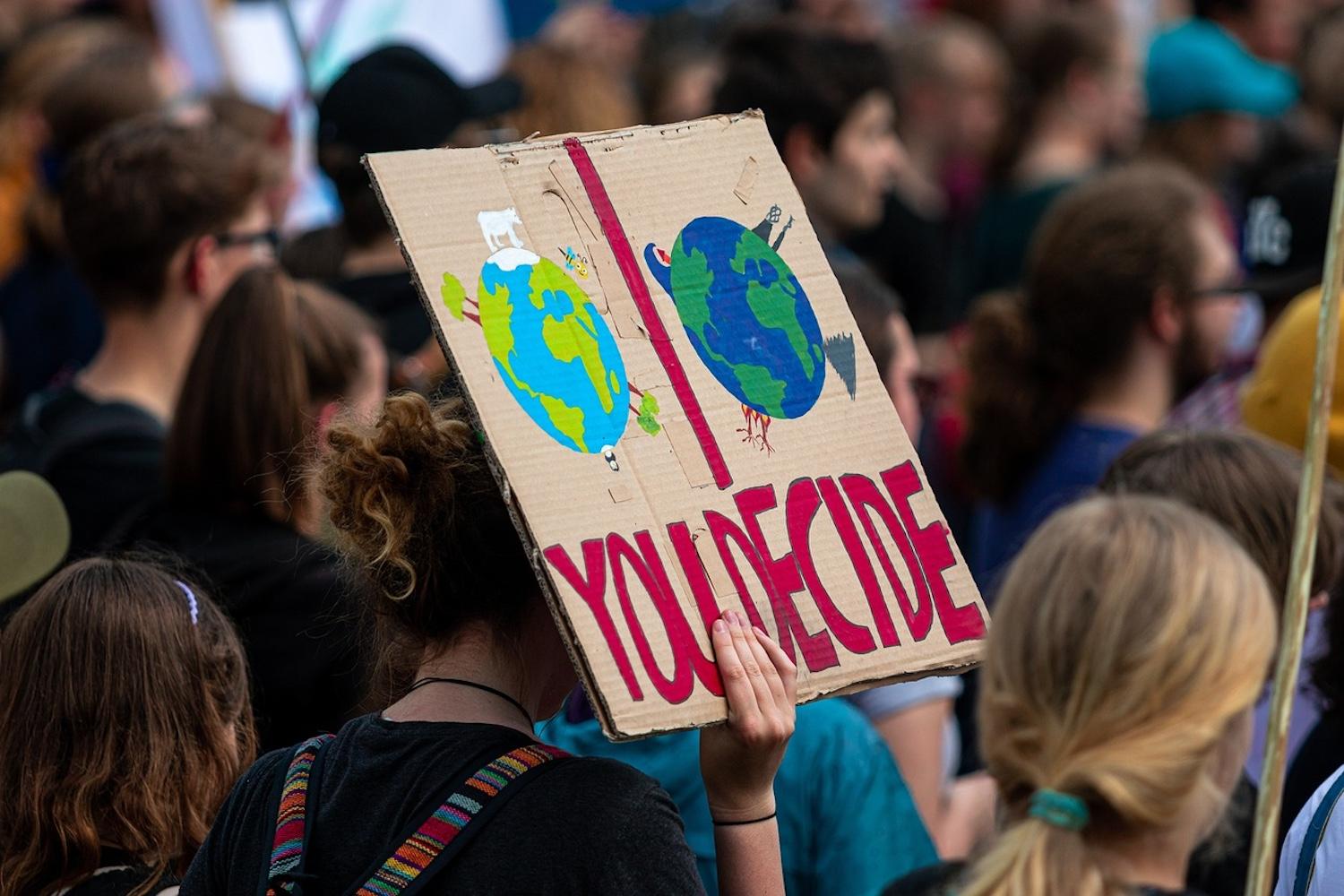
(Image: dmncwndrlch/Pixabay)
Faced with uncertainty about climate action under a new White House but armed with a commitment to keep doing the work, climate philanthropists are choosing action over despair.
“The energy transition is a long, complicated arc that is going to take changes in markets, policy and technology,” Dan Stein, Ph.D., founder and executive director of Giving Green, told TriplePundit.
Stein leads a team of researchers in their efforts to help philanthropists make more informed, evidence-based decisions about supporting climate action and maximizing their impact through giving.
“Every regulation and bill that pushes that arc forward is helpful, and everything that pushes it back is not helpful,” he said. “But when we think about these very long transitions, I am able to be more sanguine about what will happen in a four-year period because it’s a long-term game we are playing.”
President-elect Donald Trump, who attacked climate action and science throughout his campaign, has climate philanthropists and other climate experts worried. While the concern isn’t misplaced, those who share Stein’s view of climate change mitigation as a long-term investment will be able to find a middle ground, he said.
Among other aims, philanthropists try to bridge the gap between government funding and the needs of local communities, and Stein sees that continuing. He is realistic, however, about the capacity of private philanthropy to make up for a shortfall in government spending. At $663 billion, the 2022 Inflation Reduction Act (IRA) enacted under President Joe Biden was the largest climate investment in United States history. That far exceeds the $5.2 billion in foundation funding working to reduce greenhouse gas emissions in the U.S. Less than 2 percent of philanthropic giving is directed toward climate change mitigation.
“We tend to see philanthropy and government as complements rather than substitutes,” Stein said. “I'm excited about philanthropy playing a role in working with government going forward, including at the federal level, where I think there are areas we can make progress or at least stop retrenchment of climate policy. Philanthropy can also be effective in other levels of government as well as internationally, where there's still more space for progress.”
Finding common ground
Those in the climate space have been wringing their hands over the fate of the IRA. Within the philanthropic community and across government, “there’s been a passionate discussion on every piece of the IRA,” Stein said. The legislation has brought significant jobs and investments to fast-track the clean energy transition in states around the country.
“Different arguments are playing out. One is in favor of retaining the IRA, or pieces of it, to maintain stability and consistency for businesses,” Stein said. “These businesses have made a lot of investment based on the IRA, and it would be irresponsible as the federal government to just whisk it out from under them. The other argument is about the pressure to decrease the federal budget. I think we’ll end up with a bunch of negotiations and come up with a new reality, which is probably not to get rid of everything that Biden did.”
Eighteen congressional Republicans have already sounded a warning bell on a full repeal of the IRA. In a recent report, Crux — which runs a central platform for companies and clean energy developers to utilize the transferability function of energy credits — said it anticipates any changes to the law to be “surgical” in nature.
Public support for climate donations is rising
Whatever the fate of the IRA, the philanthropic community is rolling up its sleeves to do what it can to keep the climate movement on track. Public sentiment seems to be behind them. Data from Charity Navigator showed a massive spike in donations to climate charities in the days following the election, particularly among younger donors who are increasingly motivated by specific causes rather than traditional charitable institutions.
Giving Green also noted an uptick in donations from donors identifying the election as their reason for giving, with a 67 percent increase in search traffic to the Giving Green website in the days following the election. This spike sustained over the last few weeks, with above-average search traffic nearly every day since the election.
Climate philanthropy is a broad umbrella and more people are needed and welcomed, Stein said. It includes major private foundations like the Bezos Earth Fund, the Melinda and Bill Gates Foundation and the Hewlett Foundation. “You go from there to medium-sized foundations to small family foundations. Those high-net-worth individuals, right down to what we call mom-and-pop donors cutting a $50 or $100 check at the end of the year to a favorite handful of charities.”
Small but mighty: A case study from California
Whatever the size of their contribution, climate philanthropy can have an outsized impact on pushing forward change. For Stein, one example that makes the impact of climate philanthropy crystal clear.
In 2018, a consortium of donors, researchers, and nonprofits led by the Clean Air Task Force — one of Giving Green’s top recommended climate nonprofits — came together to prevent the Diablo Canyon nuclear plant in California from closing. It was slated to close in 2025, which would imperil the state’s climate goals, The Los Angeles Times reports.
Delaying the retirement of Diablo Canyon to 2035 would reduce California's power sector carbon emissions by more than 10 percent from 2017 levels and reduce reliance on gas, according to a scientific analysis. In 2022, California Governor Gavin Newsom announced a plan to roll back the planned retirement, thanks in large part to grassroots activism.
“This campaign worked,” Stein said. “If you look at the cost of the campaign, roughly $3 million, that amounts to around one cent per ton of carbon avoided. So that’s a massively cost-effective campaign undertaken by philanthropists with the help of nonprofits that very clearly changed the policy and saved this power plant and drastically decreased California emissions.”
A solution to decision paralysis
One barrier to scaling the impact of climate philanthropy is a lack of evidence-based information about what works and what doesn’t work. Giving Green is designed to help smaller organizations and individual donors make sense of the complex, multi-faceted issue of climate change when deciding where to donate their money.
“You have a lack of information holding money on the sidelines — lots of money,” Stein said. “We hear this from big philanthropists, as well. People want to give money to help solve this problem but don’t know what to do, so they’re faced with decision paralysis. In our mind, there was the need for an actionable resource for people looking to solve this problem.”
Many billions of dollars are “just filling up in donor-advised funds because people don’t know what to do,” Stein said. “There are a lot of resources that could be motivated toward solving this problem which could really grow the size of the pie.”
Donor-advised funds are giving accounts established at public charities that allow donors to make a charitable contribution. In 2023, they held some $251 billion in assets, according to a report from the National Philanthropic Trust.
“It’s a problem that’s solvable,” he said. “This is part of what inspires our work: to provide an easy-on ramp for people who have these funds sitting around to do something really impactful with them.”
Looking at the bigger picture
Another barrier to raising the profile of climate philanthropy when federal climate dollars may be taking a hit is a lack of public awareness of the role of these private donations and the messaging from philanthropists themselves, Stein said.
“Climate change is the most important social issue of our time,” he said. “Not everyone agrees with that, but I think it’s true. And it is also a very specific problem with a specific action: decreasing the amount of greenhouse gases in the atmosphere. A lot of climate philanthropy lacks this very specific focus and the effective ways we know to address it.”
That message needs to be conveyed to donors, Stein said.
“We can’t afford to just think small, like giving money to put in solar panels. We need to be asking those big questions,” he said. “What would the world look like with fewer greenhouse gas emissions? How do we get there? What’s the technology we need? What laws do we need? And then try to put the money toward those solutions.”

Based in Florida, Amy has covered sustainability for over 25 years, including for TriplePundit, Reuters Sustainable Business and Ethical Corporation Magazine. She also writes sustainability reports and thought leadership for companies. She is the ghostwriter for Sustainability Leadership: A Swedish Approach to Transforming Your Company, Industry and the World. Connect with Amy on LinkedIn and her Substack newsletter focused on gray divorce, caregiving and other cultural topics.














